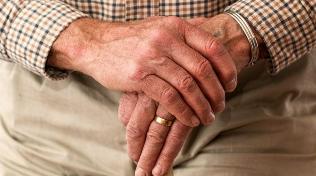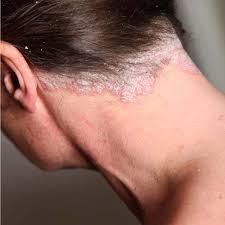A characteristic feature of psoriasis is the dominant location of the papules symmetrically on the skin of the extensor surface of the hands and feet and scalp.

Despite the fact that the leading role in the development of psoriasis is the presence of a genetic predisposition (psoriasis is a disease, inherited), the impetus for the emergence of the disease can serve many Exo-and endogenous factors (the development of psoriasis the nervous system, hormonal disorders, after infectious diseases, etc.).
Etiological factors of the disease
The disease has no sex predisposition, therefore, the frequency of the occurrence of psoriasis in men and women is no different. 12% of patients with the disease first develops in up to ten years. Twenty years before psoriasis develops forty-six percent of patients, and up to thirty years sixty percent.
The development of psoriasis has two age peaks:
- twenty-seven and fifty-four years for men;
- fifteen fifty-four years for women.
Causes of psoriasis in adults
The exact cause of psoriasis is not known. The leading role in the pathogenesis of the disease involves a genetic predisposition. In addition, a significant role is played by the occurrence of immunological instability, disorders of lipid metabolism and if the patient foci of chronic infection.
In favor of genetic theories (inherited causes of psoriasis) is evidenced by the fact that the disease is always found not only the patient but also his relatives.
To identify the susceptibility to psoriasis can be when performed in the classical analysis of the genome. These patients may be ten loci of the chromosomes responsible for the genetic predisposition to the disease (PSORS 1 through 9, as well as HLA – B27, 17, etc.).
The main gene responsible for the maximum expression of the innate tendency to develop the disease, think of PSORS1.
Also in the pathogenesis of psoriasis play an important role in genetically determined disorders of metabolism of carbohydrates and lipids. Most patients with psoriasis revealed severe hyperlipidemia and metabolic syndrome. In this context, in patients with psoriasis, there is a high risk for severe early atherosclerosis lesions and heart disease.
In addition to hyperlipidemia, noting the disturbed metabolism of fatty acids (fatty acids), increased production of free radical compounds, which are involved in keratinization of the epidermis, etc.
Study psoriatic plaques, revealed a large concentration of oxidized ldl.
The main signs for assessing the proliferation of keratinocytes of the outbreak of psoriasis are proteins Ki67 and keratin, six, sixteen and seventeen. These characters are responsible for the pronounced the processes of hypertrophy, disorders of differentiation of cells and development of inflammatory reactions in the dermis.
Due to this, although the onset stage of the clinical recovery of psoriasis (the disappearance of inflammation of the skin) can endure an inflammatory process in the blood vessels of the dermis.
Also the development of inflammation of the outbreak of psoriasis the role of activated T-lymphocytic cells of mediators of the inflammatory reactions, inflammation of the capillary tossa. Study the microflora of the skin of patients with psoriasis reveal streptococci, provoke the development and exacerbation of guttate psoriasis.
Immunological basis of the pathogenesis of psoriasis is a progression of immunocompetent cells, activated CD4+ T-lymphocyte cells and cytokines of inflammation. In favor of this theory is evidenced by the fact that monoclonal antibodies psoriasis works against activated CD4+ T-lymphocyte cells have a significant therapeutic effect. Also an effective remedy for psoriasis are drugs that aim to inhibit the production of factors tumor necrosis.
Contagious psoriasis other
No. Psoriasis is a hereditary disease.
Whether psoriasis is passed from person to person
No. Catch the psoriasis another person is impossible. Despite the fact that streptococcal infection may be a precipitating factor, a person without a genetic predisposition to the disease, psoriasis does not happen.
Is psoriasis sexually
No. Psoriasis is not contagious and is not transmitted, and in the air, any contact, either sexually or otherwise.
If passed, the psoriasis is a hereditary
The development of psoriasis requires a genetic (hereditary) predisposition. Therefore, the disease is often a close relative. In the presence of psoriasis of the parents, there is a high risk of psoriasis and have children.
However, some authors distinguish psoriasis another type. It is assumed that this variant of psoriasis that develops in patients after forty years and mainly affects the joints and the nail plate is not related to heredity.
Can you die from psoriasis
No. Psoriasis is not life threatening disease. The prognosis of these patients is favorable.
However, psoriasis is much more difficult to perform in the patient's life, causing her much discomfort and reducing its social activities.
Also, it should be noted that pustular psoriasis can occur is extremely difficult, with the drain and the suppuration of the pustules, and still fall off the skin type of "purulent the lake". In this case, perhaps the development of the erythroderma, secondary bacterial complications of the common damage, etc.
Triggering factors of psoriasis development
Aggravating factors of exacerbations of psoriasis are:
- injuries of the skin;
- hormonal disorders;
- pregnancy;
- the emergence of metabolic disorders;
- drug use beta-blockers, antimalarials SR-V, etc.;
- the presence of foci of chronic infection (particularly streptococcal infection);
- alcohol abuse;
- Smoking;
- excessive sun exposure;
- eating spicy, sweet, greasy food, etc.;
- acute infectious diseases;
- exacerbation of allergic diseases;
- stress, emotional overload (psoriasis nerves becomes aggravated more often).
Classification of psoriasis
Species isolated forms of psoriasis:
- vulgaris (common psoriasis);
- exudative;
- chronic the Palms and soles;
- warty;
- follicular;
- nail;
- pustular;
Disease can use the progressive, stationary.
On the extent of the damage to distinguish limited, common and general flow.
Also there may be seasonal exacerbations: winter, summer, and vague (not through) the exacerbation of psoriasis.
Pictures, symptoms and treatment of psoriasis in adults

Psoriasis is characterized by the appearance of pinkish-red or bright red papules, covered with silvery-white scales, loose consistency. Itchy skin may be missing. Many patients note the appearance of a feeling of tightness of the skin.
Intense itching characteristic, as a rule, the psoriatic lesions on the scalp and the perineum.
The appearance of pain in the joints observed in the development of psoriatic arthritis.
A typical manifestation of psoriasis is a triad of specific symptoms :
- the emergence of the phenomenon stearin spot (strengthening of the peeling during the diagnosis of psoriatic papules, in which case it becomes similar to a drop of stearin);
- the appearance of the terminal films (the appearance of a thin transparent film left after, when poskablivanii separated from all the peeling);
- the appearance of blood in baptism or the appearance of pinpoint bleeding at the injection site in the rejection of the terminal films.
Psoriatic arthritis pimples can be used alone or combined. The size can vary from small to covering a large surface of the skin. The most common localization of papules are the elbows, knees, head (scalp) and back.
In rare cases, plaque can affect the mucous membranes of the lips and oral cavity.
Children, the elderly and people with diabetes may develop a folded form of the disease. In this case, the skin behind the ears, armpits, crotch, buttocks, navel and under the breasts.
Patients with this psoriasis can be peeling. Surface psoriatic lesions may be smooth and bright red. In some cases, it may cause maceration of the folds.
In some patients the only manifestation of the disease can be plaques on the skin and genital mucous membranes.
Usually psoriatic skin lesions are symmetrical in nature, but some patients may experience one-sided rash. You can also get curly psoriatic lesions (annular, arcuate, geographical, etc.).
Patients with a long disease course, the long-existing plaques on the skin of the lumbar and the gluteal region may be involved in increased warty growths.
In addition to the reasons for the appearance of verrucous psoriasis can include:
- purulent infection of the skin;
- wrong external treatment (usually self);
- the extra weight.
When the warty forms of the disease, the scales begin to stick together with each other, forming the surface of the plaques yellow crust.
Some patients may experience a alone performer of the Palms and soles of the psoriasis. In this case, the patient worried about painful cracks, blisters, wheals, erythematous-squamous plaques on the palms and feet.
A frequent manifestation of psoriasis is damage to the nail plate. In most cases, the appearance of dotted recesses on the surface of the nail (dystrophy). Also can occur deformation of the nail, the longitudinal and transverse striae, thickening of the nail plate, it is loosening and changing colors, bleeding under the nail plate.
In psoriatic erythroderma, usually develop in the background is excessive sun exposure or improper topical treatment is a powerful skin swelling, redness, intense itching and flaking, fever, weakness and loss of appetite. In serious, it can cause anemia, heart failure, and disorders of the kidney and liver, is dehydration and alopecia areata.
Psoriasis and pregnancy is a threat to the child, especially
Psoriasis does not violate the reproductive function and no contraindications to pregnancy. It should be noted that many women during pregnancy, the disease is easier than normal. However, about twenty percent of women can be expressed exacerbation of the disease.
In general, psoriasis does not interfere with the course of pregnancy and threatens the life of a child. However, patients with arthritis, adding to the load on the joints, could be a significant deterioration. In generalized forms of pustular psoriasis, the possible emergence of secondary bacterial complications.
It should be noted that because of the psoriasis is not true for infectious diseases, the mother is not allowed contact with the child and breastfeed it. The likelihood of developing psoriasis in the future is equivalent to about 15-20%, if sick only one parent and approximately 50% when both parents are sick.
The main difficulty in the treatment of psoriasis in pregnant women is that they are only in most of the prescribed medication. Therefore, when planning a pregnancy should inform her doctor so she will adjust the treatment.
Self-medication is strictly prohibited and may cause significant harm to both the mother and the baby (some drugs have toxic effects on the fetus).
Diagnosis of the disease
The diagnosis put on the basis of specific symptoms (psoriatic triad). And also, if necessary, information on the histological, immunological, and radiological studies.
























